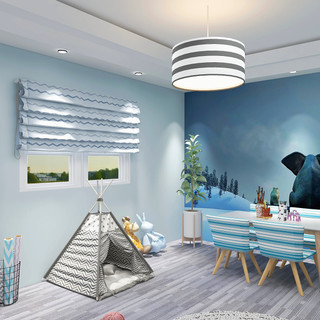10 Design Ideas for your Home School Room
- Sharon Otto
- Aug 16, 2020
- 3 min read
Updated: Aug 18, 2020
As we approach the start of the school year, COVID is creating the necessity for more educational time at home. As a parent you are probably looking for ideas on how you can set up a room for your children to learn most effectively while there.
The key is to make your homeschool room a place your children enjoy, not only learning, but just being.
Having some experience in education and being a designer, I thought I might take this opportunity to share renderings of a home school room I designed, along with ten design ideas for your own homeschool room. I've also shared affiliate links out to products that could help you implement some of these ideas on your own.
*Renderings and Design by Sharon Otto Interiors
Create zones in the room for your children to use in different ways - this is important because children learn differently. Some may need to move to stay focused, some may want to lay down, some may like to sit at a table, and the list goes on. Talking to your child and finding out what areas they would enjoy may be valuable for their learning experience.
Children's tents, like the one in the provided renderings, are great ways for a child, especially if there are multiple children, to find personal space to do something they enjoy, like reading.
Add a fun peel and stick mural to one of the walls to make the room feel like a creative space and get those imaginations revved up. The one in this image is called Dog and Elephant at Christmas which is available in 2 sizes on Amazon. However, you can find a bunch of different mural options on many sites.
If you have hardwood floors, buy carpet tiles and put them down in the learning space. Again, you want your children to have the ability to easily move around and change position to facilitate learning.
Add a plant (or plants) to the space as a way for them to learn to take care of a living thing. Use it to help them learn about the benefits of plants to our environment. The Sill has a nice selection of live plants that may be good starter plants.
Have a few different light sources in order to easily change the mood of the space based on their activities. Dimming recessed lights and an overhead fixtures are great starters. I might suggest to have a desk lamp and/or floor lamp as well.
Use a relaxing color scheme, but don't be afraid to add pops of color through shelving, storage, lamps, window treatments, chairs, etc. These fabrics from Decorators Best - Turquoise Stripe and Painted Lines - are a great place to start with some inspiration.
Hang creative art (check out this fun map as an example) and have art tools available in the room - crafting paper, paint brushes, paint, and colored pencils to name a few.
Section off part of the wall and add some chalkboard paint!
Understand more about learning styles and consider elements you could add to the space based on your child's style. For example, some students need music to concentrate, some must have silence.
Whatever you do, remember that your time and patience with your children is more important than any design setup that you may complete in their homeschooling space! If you feel like you just don't have the time to put into this process, Sharon Otto Interiors is happy to take some of that pressure off and provides many design service options for your homeschooling needs.














Comments